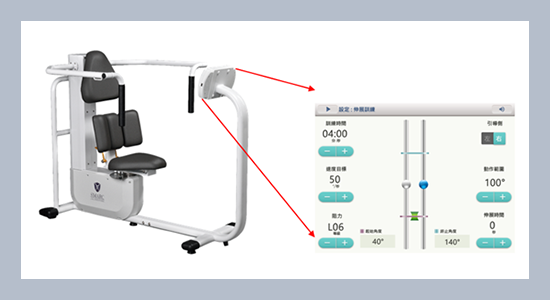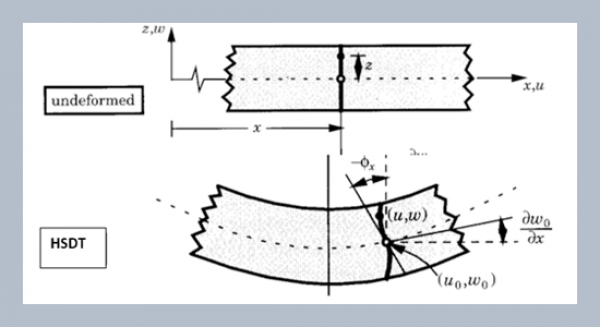REFERENCES
- Ardahan, M., Simsek, H. 2016. Analyzing musculoskeletal system discomforts and risk factors in computer-using office workers. Pakistan Journal of Medical Sciences, 32(6), 1425–1429.
- Bekiari, E.I., Lyrakos, G.N., Damigos, D., Mavreas, V., Chanopoulos, K., Dimoliatis, I.D. 2011. A validation study and psychometrical evaluation of the Maastricht Upper Extremity Questionnaire (MUEQ) for the Greek‑speaking population. Journal of Musculoskeletal and Neuronal Interactions, 11, 52–76.
- Borg, G. 1998. Borg's perceived exertion and pain scales, Human Kinetics, Champaign, IL, USA.
- Briggs, A.M., Woolf, A.D., Dreinhöfer, K., Homb, N., Hoy, D.G, Giles, D.K., Åkessong, K., Marchh, L. 2018. Reducing the global burden of musculoskeletal conditions. Bull World Health Organ, 96, 366–368.
- Carter, J.B., Banister, E.W., Blaber, A.P. 2003. The effect of age and gender on heart rate variability after endurance training. Medicine & Science in Sports & Exercise, 35, 8, 1333–1340.
- Chang, L.R., Anand, P., Varacallo, M. 2023. Anatomy, shoulder and upper limb, Glenohumeral Joint. In: StatPearls [Internet]. StatPearls Publishing, Treasure Island (FL): Aug. 8, 2023. Available from: https://www.ncbi.nlm.nih.gov/books/NBK537018/
- Chen, X., Coombes, B.K., Sjøgaard, G., Jun, D., O'Leary, S., Johnston, V. 2018. Workplace-based interventions for neck pain in office workers: Systematic review and meta-analysis. Physical Therapy, 98(1), 40–62.
- CSEP 2023, Canadian physical activity guidelines for adults (18–64 years): An integration of physical activity, sedentary behaviour, and sleep, on the Internet at https://csepguidelines.ca/adults-18–64/ (accessed October 10, 2023), Canadian Society for Exercise Physiology.
- Dalager, T., Welch, A., O'Leary, S.P., Johnston, V., Sjøgaard, G. 2023. Clinically relevant decreases in neck/shoulder pain among office workers are associated with strength training adherence and exercise compliance: Explorative analyses from a randomized controlled trial. Physical Therapy, 103(2), pzac166.
- Feng, B., Chen, K., Zhu, X., Ip, W.Y., Andersen, L.L., Page, P., Wang, Y. 2021. Prevalence and risk factors of self-reported wrist and hand symptoms and clinically confirmed carpal tunnel syndrome among office workers in China: a cross-sectional study. BMC Public Health, 21(1), 57.
- Geneva, I.I., Cuzzo, B., Fazili, T., Javaid, W. 2019. Normal body temperature: A systematic review. Open Forum Infectious Diseases, 6(4), ofz032.
- Hoe, V.C.W., Urquhart, D.M., Kelsall, H.L., Zamri, E.N., Sim, M.R. 2018. Ergonomic interventions for preventing work-related musculoskeletal disorders of the upper limb and neck among office workers. Cochrane Database of Systematic Reviews, 10, CD008570.
- Kaliniene, G., Ustinaviciene, R., Skemiene, L., Vaiciulis, V., Vasilavicius, P. 2016. Associations between musculoskeletal pain and work-related factors among public service sector computer workers in Kaunas County, Lithuania. BMC Musculoskeletal Disorders, 17(1), 420.
- Kendall, F.P., Kendall McCreary, E., Provance, G.P., Rodgers, M.M., Romani, W. 2005. Muscles-testing and function with posture and pain. ISBN13:9780781747806, Lippincott Williams & Wilkins, North America.
- Kuorinka, I., Jonsson, B., Kilbom, A., Vinterberg, H., Biering-Sorensen, F., Andersson, G., Jørgensen, K. 1987. Standardised Nordic questionnaires for the analysis of musculoskeletal symptoms. Applied Ergonomics, 18, 233–237.
- Louw, S., Makwela, S., Manas, L., Meyer, L., Terblanche, D., & Brink, Y. 2017. Effectiveness of exercise in office workers with neck pain: A systematic review and meta-analysis. The South African journal of physiotherapy, 73(1), 392.
- Machado-Matos, M., Arezes, P.M. 2016. Impact of a workplace exercise program on neck and shoulder segments in office workers, DYNA, 83, 196, 63–68.
- Mathiowetz, V., Kashman, N., Volland, G., Weber, K., Dowe, M., Rogers, S. 1985. Grip and pinch strength: normative data for adults, Archives of Physical Medicine and Rehabilitation, 66(2), 69–74.
- Mani, K. 2018. Ergonomics education for office computer workers: An evidence-based strategy. In book: Anatomy, posture, prevalence, pain, treatment and interventions of musculoskeletal disorders, edited by Orhan Korhan, 47–62, Intech Open.
- Mani, K., Provident, I., Eckel, E. 2016. Evidence-based ergonomics education: Promoting risk factor awareness among office computer workers. Work, 55(4), 913–922.
- Mohammadian, M., Choobineh, A., Haghdoost, A., Hasheminejad, N. 2014. Normative data of grip and pinch strengths in healthy adults of Iranian population, Iranian Journal of Public Health. 43(8), 1113–1122.
- Mohan, V., Inbaraj, L. R., George, C. E., Norman, G. 2019. Prevalence of complaints of arm, neck, and shoulders among computer professionals in Bangalore: A cross-sectional study. Journal of family medicine and primary care, 8(1), 171–177.
- Moreira, S., Ferreira, M.S., Criado, M.B., Machado, J., Mesquita, C., Lopes, S., Santos, P.C. 2021. Occupational health: Does compliance with physical activity recommendations have a preventive effect on musculoskeletal symptoms in computer workers? A cross-sectional study. International Journal of Environmental Research and Public Health, 18(14), 7604.
- Ostchega, Y., Porter, K.S., Hughes, J., Dillon, C.F., Nwankwo, T. 2011. Resting pulse rate reference data for children, adolescents, and adults: United States, 1999–2008. National Health Statistics Reports, 24(41), 1–16.
- Padmanathan, V., Halim, I., Zaid, R., Wei, T. 2018. Physical risk factors and observational tools for computer office workers–an overview. International Journal of Mechanical Engineering and Technology, 9, 694–704.
- Petry, N.M. 2002. A comparison of young, middle-aged, and older adult treatment-seeking pathological gamblers. Gerontologist, 42(1), 92–99.
- Sung, P.C. 2022. Efficacy of real-time audio biofeedback on physiological strains for simulated tasks with medium and heavy loads. International Journal of Applied Science and Engineering, 19, 2022308.
- Sung, P.C., Liu, Y.P. 2022. Assessments of forearm muscular demands and perceived exertions for different massage techniques of the Swedish-type massage. International Journal of Applied Science and Engineering, 19, 2021522.
- Tersa-Miralles, C., Bravo, C., Bellon, F., Pastells-Peiró, R., Rubinat Arnaldo, E., Rubí-Carnacea, F. 2022. Effectiveness of workplace exercise interventions in the treatment of musculoskeletal disorders in office workers: a systematic review. BMJ Open, 12(1), e054288.
- Trinidad-Fernández, M., González-Molina, F., Moya-Esteban, A., Roldán-Jiménez, C., González-Sánchez, M., Cuesta-Vargas, A.I. 2020. Muscle activity and architecture as a predictor of hand-grip strength. Physiological Measurement, 41(7), 075008.
- TWDGBAS 2020. Taiwan Labor Force Projections of years 2019–2030, on the Internet at https://ws.ndc.gov.tw/001/administrator/18/relfile/0/8591/4ba41efa-5410-4bf3-b32c-f60b0fb90c4f.pdf (accessed October 24, 2023). Directorate General of Budget, Accounting and Statistics of Executive Yuan, Taiwan.
- TWBLI 2022. Occupational disease case benefits under labor insurance, on the Internet at https://statdb.mol.gov.tw/html/mon/26090.htm (accessed September 15, 2023). Bureau of Labor Insurance, Ministry of Labor, Taiwan.
- USBLS 2021. The Economics Daily: Number of people 75 and older in the labor force is expected to grow 96.5 percent by 2030, on the Internet at https://www.bls.gov/opub/ted/2021/number-of-people-75-and-older-in-the-labor-force-is-expected-to-grow-96-5-percent-by-2030.htm (accessed September 30, 2023). Bureau of Labor Statistics, U.S. Department of Labor.
- Van Eerd, D., Munhall, C., Irvin, E., Rempel, D., Brewer, S., van der Beek, A.J., Dennerlein, J.T., Tullar, J., Skivington, K., Pinion, C., Amick, B. 2016. Effectiveness of workplace interventions in the prevention of upper extremity musculoskeletal disorders and symptoms: an update of the evidence. Occupational and Environmental Medicine, 73, 62–70.
- Wattanaprakornkul, D., Halaki, M., Boettcher, C., Cathers, I. and Ginn, K.A. 2011. A comprehensive analysis of muscle recruitment patterns during shoulder flexion: An electromyographic study. Clinical Anatomy, 24, 619–626.
- Wind, A.E., Takken, T., Helders, P.J., Engelbert, R.H. 2010. Is grip strength a predictor for total muscle strength in healthy children, adolescents, and young adults? European Journal of Pediatrics, 169(3), 281–287.
- WHO 2022. Physical Activity, on the Internet at https://www.who.int/news-room/fact-sheets/detail/physical-activity (accessed October 15, 2023), World Health Organization.
- Ye, S., Jing, Q., Wei, C., Lu, J. 2017. Risk factors of non-specific neck pain and low back pain in computer-using office workers in China: A cross-sectional study. BMJ Open, 7, e014914.
- Zebis, M.K., Andersen, L.L., Pedersen, M.T., Mortensen, P., Andersen, C.H., Pedersen, M.M., Boysen, M., Roessler, K.K., Hannerz, H., Mortensen, O.S., Sjøgaard, G. 2011. Implementation of neck/shoulder exercises for pain relief among industrial workers: a randomized controlled trial. BMC Musculoskeletal Disorders, 12, 205.















